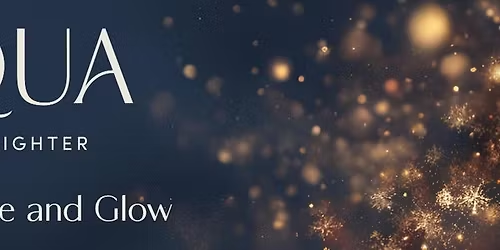Friendship Meal & Meditation
Schedule
Wed Nov 12 2025 at 06:00 pm to 09:00 pm
UTC-05:00Location
Chùa Vạn Hạnh | Lansing, MI

7-9PM Meditation 12 NOV 2025
3015 S MLK BLVD, Lansing, MI
Out beyond ideas of wrongdoing and rightdoing, there is a field. I’ll meet you there.”
~ Rumi
You live in illusion and the appearance of things. There is a reality, but you do not know this. When you understand this, you see that you are nothing. And being nothing, you are everything. That is all.
~ Kalu Rinpoche
Dear Sangha,
Underneath our carefully built and managed dream-like façade of the loosely held-together “I” — and all that we think belongs to this “I”: our roles, titles, work, responsibilities, relationships, inner and outer belongings, body, beliefs/values, characteristics, etc. — there is something that is always there: aware, kind, and cognizant. That is our true nature. All of Rinpoche’s teachings aim to help us see who we truly are, instead of who we think we are, and gradually, through step-by-step practice, gain confidence in this.
This true nature is beyond happy/unhappy, rich/poor, success/failure, young/old, beautiful/ugly, ill/healthy. It is unborn, and therefore it will never die. It also possesses many other amazing qualities beyond what our conceptual, dualistic mind can grasp.
In an online teaching this morning, Rinpoche explained that every action we take arises because we have awareness, love/compassion, and wisdom. Even during sleep, if a mosquito bites us, we can perceive the itch (awareness), recognize it as an itch (wisdom), and react by scratching (out of love and compassion). Awareness, love, compassion, and wisdom are with us 24/7.
Rinpoche also mentioned that recognition is the only difference between samsara and nirvana. He used the example of owning ten pounds of diamonds without realizing it — thinking they are just stones. Once we recognize the diamonds as diamonds, we can live a good life. Similarly, once we recognize our true nature, we stop chasing after things and people outside ourselves, falsely believing they will satisfy us or make us whole. Instead, we cultivate innate well-being that can always be there for us through thick and thin — a truly dependable refuge.
When we do not recognize our true nature and instead take the collection of things to be the real “I,” we are like children building sandcastles on the beach all day, then crying when the waves wash them away. When our children were young and we were on a beach in California, I watched our younger daughter, Helena, building sandcastles. Each time the waves came and washed them away, she felt a bit sad, yelled at the ocean, and then began again — trying to fortify her castles with small rocks, shells, and other things nearby. Inevitably, the waves washed those away too. Watching her, it struck me how much we are like that in daily life.
To live in this world, we do need to take care of ourselves and those we love. We can still build sandcastles. However, if we know they are sandcastles while building them — without attachment — we can spare some time and energy to make good use of this precious human life: to receive teachings, to practice to recognize our true nature, and to free ourselves from this cyclical existence of sandcastle building, lifetime after lifetime, once and for all. We can also help all other beings with karmic connection with us be free.
Each time we practice mindfulness, each time we are aware, each time we practice love and compassion, each time we contemplate impermanence, interdependence, and the inherently empty (yet vividly appearing) nature of all phenomena, we are piercing a tiny hole through the dark, thick veil that covers our true nature — letting a bit more light shine through. When we keep up our practice, one day the whole veil will no longer be able to hold itself up.
Understanding this view — understanding what we are doing in our practice — is important. As Rinpoche always reminds us, we are not creating anything new; we are simply uncovering what has always been there. Our practice is quite simple: to recognize, to connect, to be, and to let things be as they are. With practice, our faith in our true nature grows, and our confidence in the Buddha’s teachings deepens.
This is simple, but not easy. Oftentimes we are “lazy and busy.” It is important to cultivate renunciation of our attachment to the perceived solid “I” and the phenomenal world. Remembering impermanence, remembering our own mortality in this human form, remembering that these precious opportunities may disappear at any time — not knowing where we will be in our next life or whether we will have the same wonderful conditions and freedoms to practice — helps motivate us to be diligent and not forgetful, not lost in the array of fickle thoughts and the rainbow-like phenomenal world.
The beauty of these practices is that they can be done anytime, anywhere. We do not have to meditate in remote caves in Asia to become enlightened. We do not need to stop working or give up our responsibilities. With step-by-step practice, we can use whatever life presents — including challenges — as opportunities to connect with awareness, love/compassion, and wisdom, and to awaken to our true nature. And we can gradually transform whatever we do (instead of out of selfish motivations) into manifestations of love, compassion, awareness and wisdom to benefit all beings.
Sorry for this long message. This coming Wednesday, we will continue reading and discussing Mingyur Rinpoche’s book In Love with the World: A Monk’s Journey Through the Bardos of Living and Dying, focusing on chapters 17–23 (pp. 139–188). I hope we can take some time to discuss emptines :
· What is emptiness?
· How do you understand emptiness? What are examples/metaphors/similes that work well for you?
· What are common misunderstandings of emptiness?
· How can understanding emptiness help us?
Read what you can, and no worries if you don’t have time. If you do, also feel free to bring any teachings that resonate with you and any questions you may have.
Thank you, everyone! I look forward to our discussion.
With much gratitude,
Baolian
ps: I attach the 37 verses of the practices of the Bodhisattva from last Wednesday.
--
Where is it happening?
Chùa Vạn Hạnh, 3015 S Martin Luther King Jr Blvd,Lansing,MI,United StatesEvent Location & Nearby Stays:


















